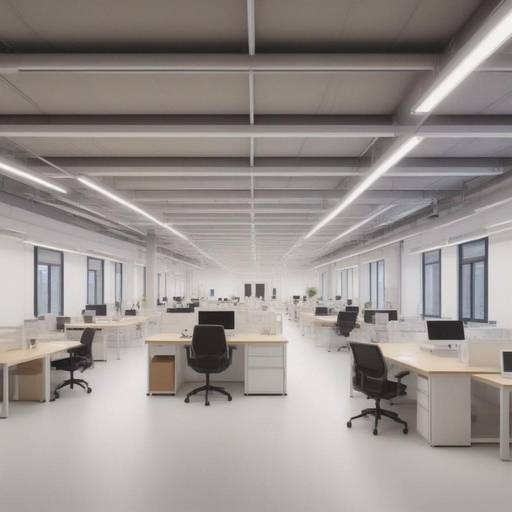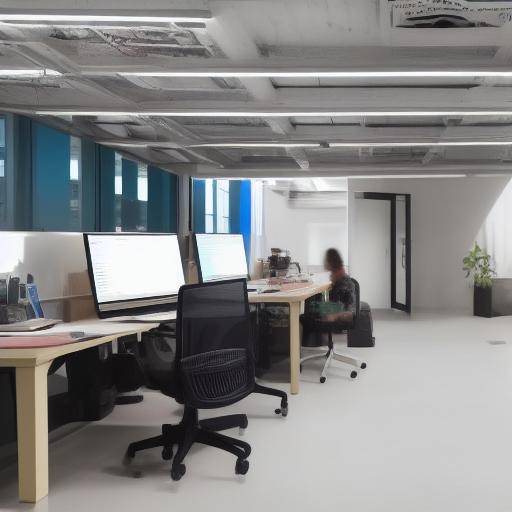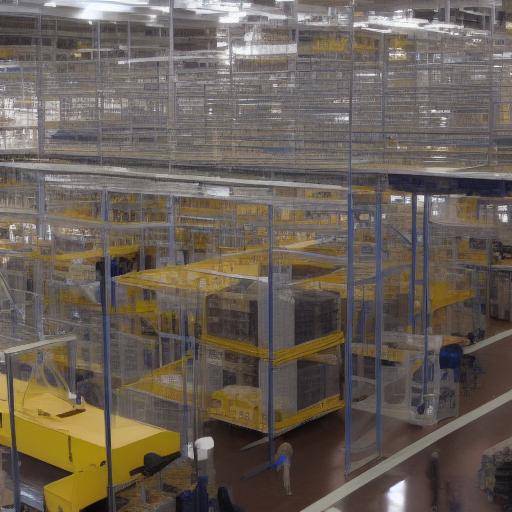
Natural lighting is a key element in any working environment, as it not only affects the comfort and aesthetics of the place, but also has a significant impact on the productivity and well-being of employees. In this article we will explore in depth how natural light influences the working environment and well-being, as well as best practices and future trends in this area.
Introduction
Natural light has been recognized since time immemorial as an essential element for life and human well-being. For a long time, sunlight has been venerated by its ability to provide heat, energy and vision in the working environments. However, in the modern era, with the proliferation of artificial lighting, the positive impact that natural light can have on the productivity and well-being of workers has been overlooked. In this article, we will explore in detail how natural light can positively affect the working environment and job well-being, and what practices we can implement to maximize their benefits.
History and background
The use of natural light in the working environments has a long history that goes back to ancient civilizations that understood the importance of sunlight for life. From the Egyptian buildings with solar orientation to the windows of the medieval monasteries, humanity has sought and taken advantage of natural light to improve the quality of life and work.
In the modern world, the Industrial Revolution marked a significant change in the way people worked, moving increasingly from natural light while factories and offices were illuminated with artificial light. This transition led to a decrease in exposure to natural light during working hours, which had negative impacts on workers' health and productivity.
In-depth analysis
The impact of natural light on the working environment and well-being is undeniable. Numerous studies have shown that regular exposure to natural light has positive effects on the mood, energy, concentration and productivity of employees. Natural light has also been related to stress reduction and visual fatigue, promoting a healthier and more attractive working environment.
In addition, natural light can influence the circadian cycle of individuals, which in turn has significant effects on sleep quality and overall performance. Working environments that allow access to natural light have demonstrated a positive impact on the overall health and well-being of employees, which in turn results in increased job satisfaction and retention.
Full review
In practice, the effective integration of natural light into the working environment can be achieved through architectural designs that prioritize the entry of natural light, the intelligent distribution of workspaces and the implementation of solar control technologies. These strategies can maximize exposure to natural light, promoting a healthier and more productive working environment. As companies recognize the benefits of natural light, we see a growing trend towards the design of workspaces that effectively incorporate natural lighting as a central element.
Comparative analysis
By comparing the importance of natural light with other factors that affect the working environment and well-being of work, we can appreciate its outstanding role in creating optimal workspaces. The combination of natural light, an ergonomic working environment and measures to promote labour well-being, such as active breaks and relaxation spaces, can have a significant impact on employee motivation and satisfaction.
Accessible practical advice and recommendations
While integrating natural light into working environments may require investments and structural changes, there are practical strategies and recommendations that can be effectively implemented to maximize their benefits. Some include:
- Place workspaces near windows or in areas with natural lighting.
- Use building materials and colors that reflect and maximize natural light.
- Implement lighting control systems to regulate the amount of natural light according to the time of the day and specific needs.
- Promote access to outdoor areas where employees can enjoy natural light during their breaks.
- Consider the design of furniture and the division of spaces to maximize natural lighting in all areas of work.
These practices can significantly improve the working environment and well-being of employees, which in turn results in increased productivity and retention of talent.
Industry perspectives and expert reviews
The importance of natural light in the working environment has been highlighted by experts in architectural design, occupational health and well-being. According to many of these experts, the integration of natural light into the design of workspaces is essential to promote the health, productivity and overall well-being of employees. As organizations are more aware of these effects, the trend towards working environments that prioritize natural light is expected to continue to increase.
Case studies and practical applications
Several case studies have demonstrated the positive impact of natural light on working environments in different sectors. From offices to factories, examples of workspaces that have successfully integrated natural light inspire other organizations to follow their example. These cases illustrate how the combination of innovative architectural design, natural lighting and labour welfare measures can transform the working environment and the performance of employees.
Future trends and predictions
As the awareness of the importance of natural light in the working environment continues to grow, current trends are expected to be consolidated and expanded. New technologies and design approaches will continue to emerge to maximize the use of natural light in the workspaces. Furthermore, regulations and standards related to natural lighting are expected to be stricter, which will encourage organizations to prioritize their integration into their construction and renovation plans.
Conclusions and FAQs
In short, natural light has a significant impact on the working environment and well-being of employees. By harnessing their benefits, organizations can create healthier workspaces and improve the productivity of their staff. As we move forward, the integration of natural light into working environments will remain a key aspect of architectural design and well-being management in organizations.
Frequently asked questions
- Why is natural light important in the working environment?
- Natural light influences the mood, concentration and health of employees, which in turn affects productivity and job satisfaction.
- How can I maximize natural light in my office?
- It puts work close to windows, uses materials and colors that reflect light, and considers lighting control systems.
- Can artificial light completely replace natural light in a working environment?
- Although artificial lighting can complement natural light, it cannot fully reproduce its health and well-being benefits.
- Can natural light have negative effects on the working environment?
- An excess of natural light or mishandling of it can cause sudden brightness or temperature changes, so it is important to balance your use.
- Are there regulations related to the integration of natural light into workspaces?
- In some countries there are rules that establish minimum requirements for access to natural light in working environments.
- Does natural light impact in specific industrial sectors, as well as in office environments?
- Yes, the integration of natural light is beneficial in a wide range of working environments, including factories, warehouses and outdoor workspaces.
Conclusion
Natural light is a valuable asset in any working environment, with significant impacts on the productivity, well-being and satisfaction of employees. By understanding their importance and implementing effective strategies to maximize their presence, organizations can create healthier, attractive and productive working environments. Continuing to prioritize the integration of natural light into labour spaces is essential for the progress and sustainability of companies in the future.
By adopting a comprehensive approach that encompasses both labour integrity and ergonomic considerations, organizations can take advantage of the multiple benefits of natural light, leading to more vibrant working environments and a more committed and healthy workforce.
As we continue to learn about the complexities of the relationship between natural light, the working environment and well-being, it is essential to continue exploring new ways of integrating and optimizing this valuable resource in the changing and diverse working contexts of today.






























